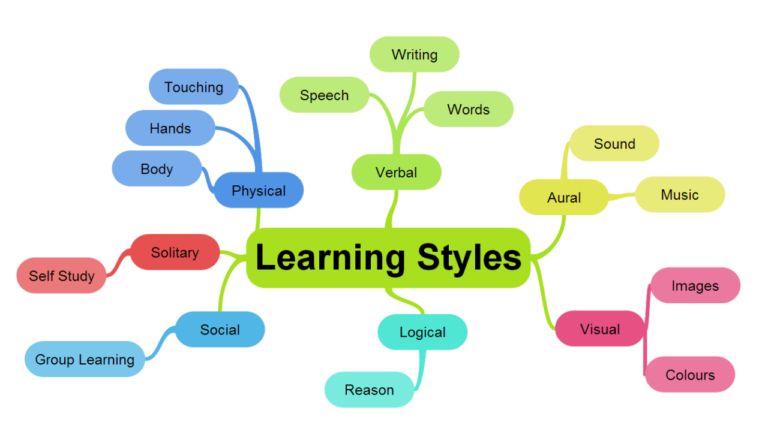Exploring STEM Education: Bridging the Gender Gap
Exploring STEM Education: Bridging the Gender Gap
STEM education—comprising Science, Technology, Engineering, and Mathematics—plays a crucial role in shaping the future workforce and driving innovation. However, gender disparities persist in these fields, with women and girls often underrepresented. This article explores the importance of STEM education, the factors contributing to the gender gap, and effective strategies to bridge this divide, fostering an inclusive environment for all students.
Understanding the Gender Gap in STEM
Current Statistics
Despite efforts to promote gender equality, women remain significantly underrepresented in STEM fields. According to recent statistics, women hold only about 28% of the workforce in STEM careers. This disparity is evident in educational pathways, with fewer female students pursuing degrees in engineering, physics, and computer science.
Long-Term Implications
The gender gap in STEM not only limits career opportunities for women but also stifles innovation and diversity in problem-solving. A diverse workforce is essential for tackling complex global challenges, and excluding women from STEM fields diminishes the collective potential of society.
The Importance of STEM Education
Economic Growth and Innovation
STEM education is crucial for driving economic growth and innovation. Countries that prioritize STEM training are better equipped to compete in a global economy, making it vital to develop a diverse talent pool.
Critical Skills for the Future
STEM education fosters essential skills such as critical thinking, problem-solving, and analytical reasoning. These skills are not only valuable in STEM careers but are also applicable in various fields, preparing students for the future job market.
Factors Contributing to the Gender Gap
Societal Stereotypes and Bias
Gender stereotypes often begin early in a child’s life, influencing their perceptions of what is considered “appropriate” for their gender. Many girls internalize the belief that STEM subjects are predominantly male domains, leading to self-doubt and reduced interest.
Lack of Female Role Models
The absence of female role models in STEM fields can discourage girls from pursuing these paths. When students do not see women in these roles, they may question their potential for success.
Educational Environment
Classroom dynamics can also play a role in perpetuating the gender gap. Girls may receive less encouragement from teachers or peers in STEM subjects, leading to lower confidence and participation.
Strategies to Bridge the Gender Gap
Promoting Inclusive Curricula
Educators should develop curricula that highlight the contributions of women and other underrepresented groups in STEM. Incorporating diverse perspectives can inspire all students and challenge stereotypes.
Encouraging Hands-On Learning
Hands-on, project-based learning can engage students in STEM subjects more effectively. Providing opportunities for girls to experiment and create in a supportive environment can foster their interest and confidence in these areas.
Providing Early Exposure
Introducing STEM concepts at an early age can spark interest among girls. Programs that focus on coding, robotics, and engineering for young girls can help demystify these subjects and encourage exploration.
Role of Educators and Institutions
Training for Educators
Educators play a vital role in shaping students’ perceptions of STEM. Professional development programs can equip teachers with the tools to promote gender equity in the classroom and encourage all students to pursue STEM.
Supportive School Culture
Creating a school culture that values diversity and inclusivity is essential. Schools should celebrate achievements in STEM, promote girl-centric clubs, and provide resources to support female students’ interests.
Encouraging Role Models and Mentorship
Connecting Students with Role Models
Programs that connect girls with female role models in STEM can provide inspiration and guidance. Guest speakers, mentorship programs, and networking opportunities can help students envision their futures in these fields.
Peer Mentoring
Establishing peer mentoring programs can also encourage girls to pursue STEM. Older students can share their experiences and offer support to younger peers, fostering a sense of community and belonging.
Conclusion
Bridging the gender gap in STEM education is essential for creating a more equitable and innovative future. By addressing societal stereotypes, providing inclusive curricula, and fostering mentorship opportunities, educators and institutions can empower girls to pursue their interests in STEM fields. The benefits of diverse representation in STEM are profound, leading to richer perspectives, enhanced problem-solving, and a stronger economy. Together, we can create an environment where all students, regardless of gender, have the opportunity to thrive in STEM education and careers.
Exploring STEM Education: Bridging the Gender Gap
STEM education—comprising Science, Technology, Engineering, and Mathematics—plays a crucial role in shaping the future workforce and driving innovation. However, gender disparities persist in these fields, with women and girls often underrepresented. This article explores the importance of STEM education, the factors contributing to the gender gap, and effective strategies to bridge this divide, fostering an inclusive environment for all students.
Table of Contents
- Understanding the Gender Gap in STEM
- The Importance of STEM Education
- Factors Contributing to the Gender Gap
- Strategies to Bridge the Gender Gap
- Role of Educators and Institutions
- Encouraging Role Models and Mentorship
- Conclusion
Understanding the Gender Gap in STEM
Current Statistics
Despite efforts to promote gender equality, women remain significantly underrepresented in STEM fields. According to recent statistics, women hold only about 28% of the workforce in STEM careers. This disparity is evident in educational pathways, with fewer female students pursuing degrees in engineering, physics, and computer science.
Long-Term Implications
The gender gap in STEM not only limits career opportunities for women but also stifles innovation and diversity in problem-solving. A diverse workforce is essential for tackling complex global challenges, and excluding women from STEM fields diminishes the collective potential of society.
The Importance of STEM Education
Economic Growth and Innovation
STEM education is crucial for driving economic growth and innovation. Countries that prioritize STEM training are better equipped to compete in a global economy, making it vital to develop a diverse talent pool.
Critical Skills for the Future
STEM education fosters essential skills such as critical thinking, problem-solving, and analytical reasoning. These skills are not only valuable in STEM careers but are also applicable in various fields, preparing students for the future job market.
Factors Contributing to the Gender Gap
Societal Stereotypes and Bias
Gender stereotypes often begin early in a child’s life, influencing their perceptions of what is considered “appropriate” for their gender. Many girls internalize the belief that STEM subjects are predominantly male domains, leading to self-doubt and reduced interest.
Lack of Female Role Models
The absence of female role models in STEM fields can discourage girls from pursuing these paths. When students do not see women in these roles, they may question their potential for success.
Educational Environment
Classroom dynamics can also play a role in perpetuating the gender gap. Girls may receive less encouragement from teachers or peers in STEM subjects, leading to lower confidence and participation.
Strategies to Bridge the Gender Gap
Promoting Inclusive Curricula
Educators should develop curricula that highlight the contributions of women and other underrepresented groups in STEM. Incorporating diverse perspectives can inspire all students and challenge stereotypes.
Encouraging Hands-On Learning
Hands-on, project-based learning can engage students in STEM subjects more effectively. Providing opportunities for girls to experiment and create in a supportive environment can foster their interest and confidence in these areas.
Providing Early Exposure
Introducing STEM concepts at an early age can spark interest among girls. Programs that focus on coding, robotics, and engineering for young girls can help demystify these subjects and encourage exploration.
Role of Educators and Institutions
Training for Educators
Educators play a vital role in shaping students’ perceptions of STEM. Professional development programs can equip teachers with the tools to promote gender equity in the classroom and encourage all students to pursue STEM.
Supportive School Culture
Creating a school culture that values diversity and inclusivity is essential. Schools should celebrate achievements in STEM, promote girl-centric clubs, and provide resources to support female students’ interests.
Encouraging Role Models and Mentorship
Connecting Students with Role Models
Programs that connect girls with female role models in STEM can provide inspiration and guidance. Guest speakers, mentorship programs, and networking opportunities can help students envision their futures in these fields.
Peer Mentoring
Establishing peer mentoring programs can also encourage girls to pursue STEM. Older students can share their experiences and offer support to younger peers, fostering a sense of community and belonging.
Conclusion
Bridging the gender gap in STEM education is essential for creating a more equitable and innovative future. By addressing societal stereotypes, providing inclusive curricula, and fostering mentorship opportunities, educators and institutions can empower girls to pursue their interests in STEM fields. The benefits of diverse representation in STEM are profound, leading to richer perspectives, enhanced problem-solving, and a stronger economy. Together, we can create an environment where all students, regardless of gender, have the opportunity to thrive in STEM education and careers.






